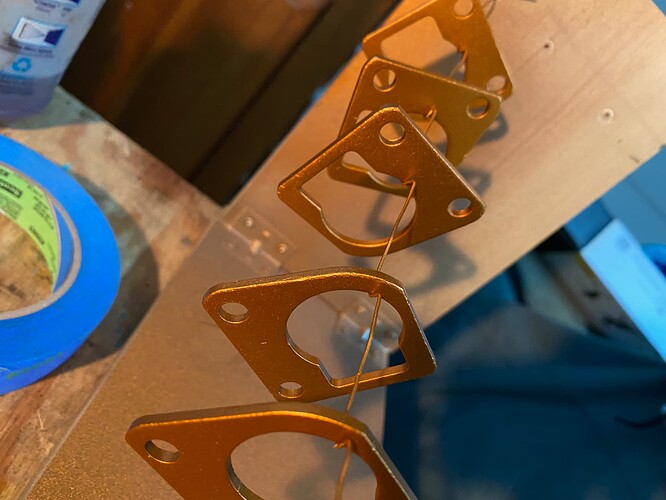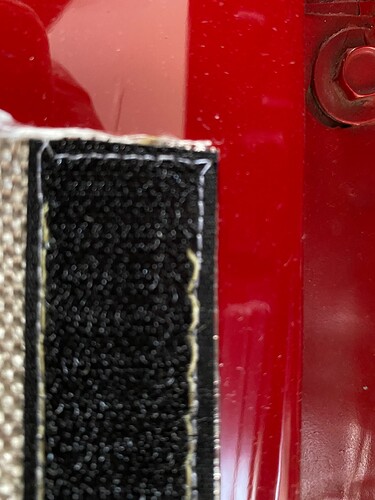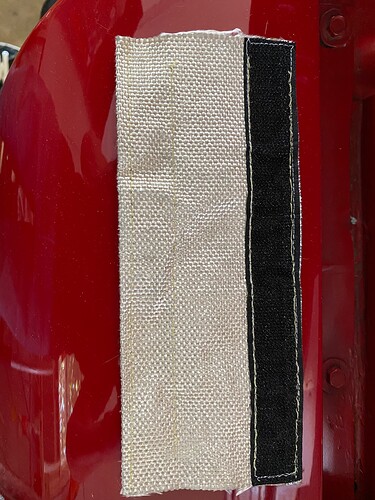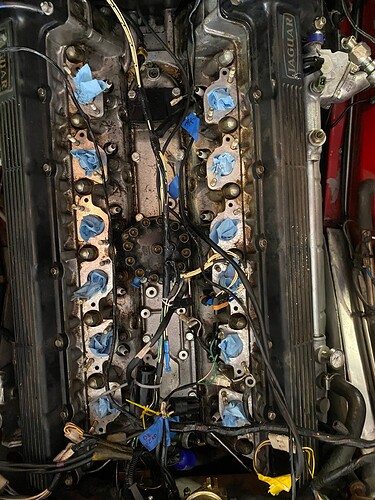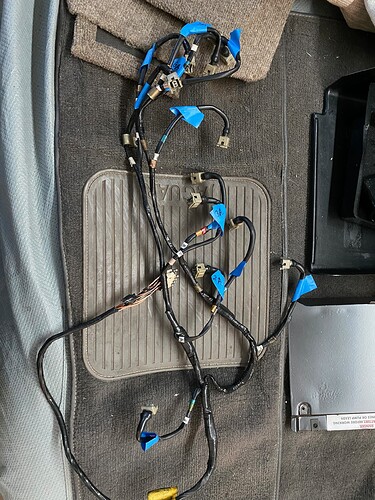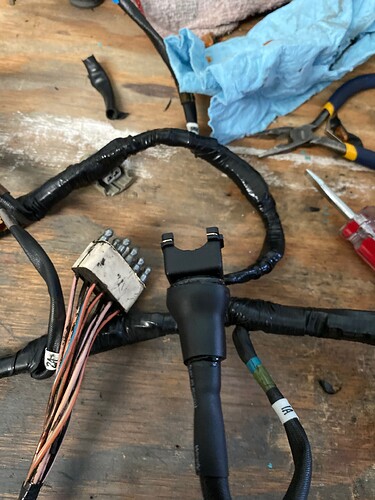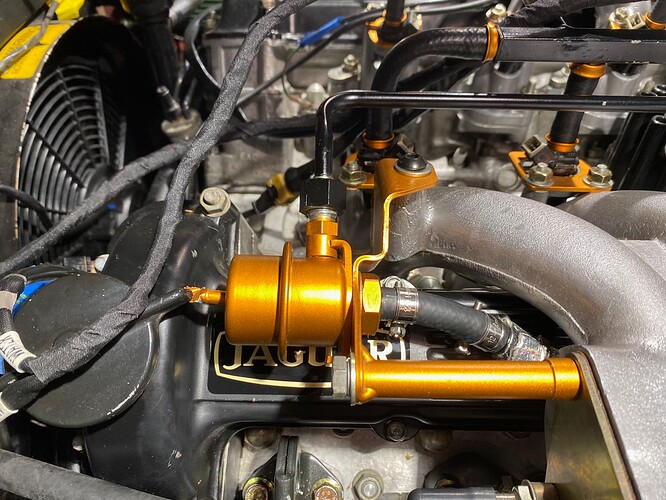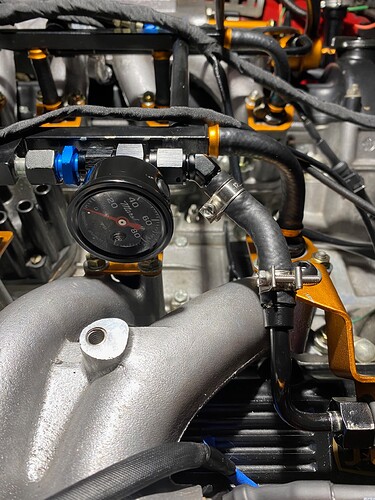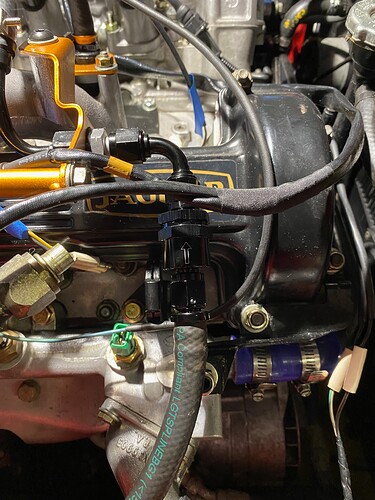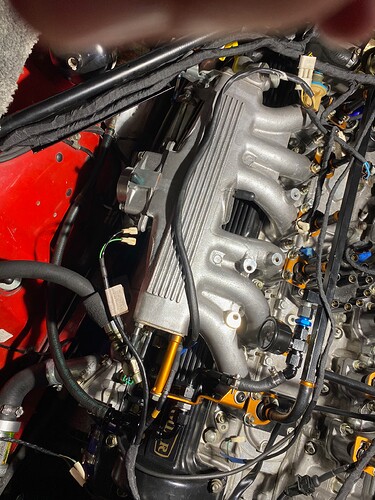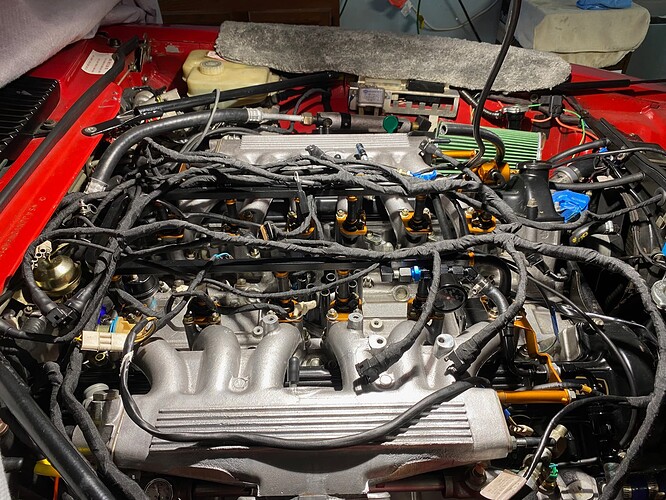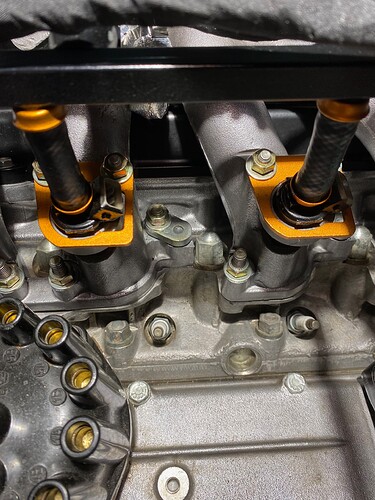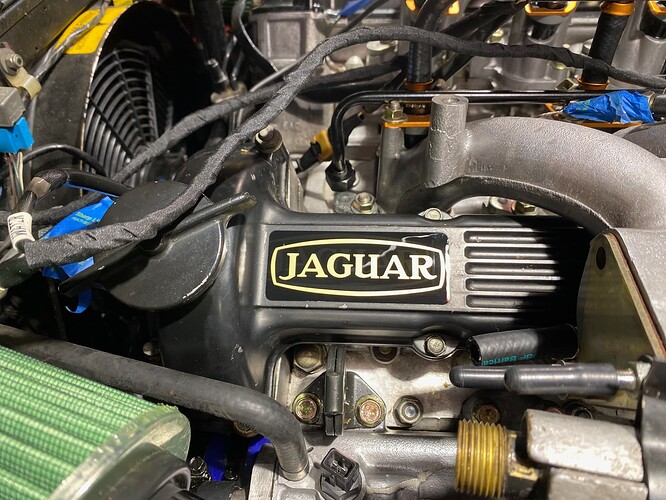Figured I’d break a topic off for those interested in the stuff that originated in the Delayed hot start issue.
I’m in week 2 now of a 10 week sprint (yes, for those software geeks out there, I have this project mapped out in JIRA).
I’ve got most of the engine compartment tear-downs done - feed and return lines out, fuel rail out, air pipe out, etc. I’m in the process of prepping and painting the various bits that I want to cleanup. I’m just about done removing all the old fabric wire loom wrap that is just disintegrating all over the place.
I knew that the oil pressure sender was leaking and it looks to have been so for a looooong time - I found what I think is the copper washer sitting under some wires at the back of the engine that is supposed to go on it, but I’ll know for sure once I rip the old one out. Also, new discovery and additional scope creep, at least one of the banjo bolts was seeping oil - so I got new ones coming from @John_John1.
I’m hoping to have the engine cleanup done and some reassembly started, but main focus will be on removing the old, broken injector connectors and starting the process of wiring the new ones in.
Question - I am planning on just removing the connectors and reusing the original wiring which is in really good shape. Should I use solder when connecting the two wires to the little connector bits?
I’ll post again in a couple of days and once I get this project done, we’ll get back to seeing if all this does anything for the ‘Delayed hat start issue’ - although indeterminate as to what fix actually resolved the problem outside of “Just fix everything” ![]()
Also of note - see the last couple of pictures on some stitching had I my older daughter try. The quick connect sleeves look to have good material, but the stitching is horrible! Makes the product totally useless for more than one use as the velcro just pulls off the protective material. When you cut the pieces to fit the stitching just starts to unravel. If you try to use a lighter to seal the threads, it melts the velcro ![]() On the bright side - it took my daughter 30 seconds to restitch that piece, it’s tight, and I can use whatever color thread I want!
On the bright side - it took my daughter 30 seconds to restitch that piece, it’s tight, and I can use whatever color thread I want!
I particularly like this pic of the engine from above - I plan on taking other ones from this same angle as things progress…
Old thread is yellow - new stitching is white…

